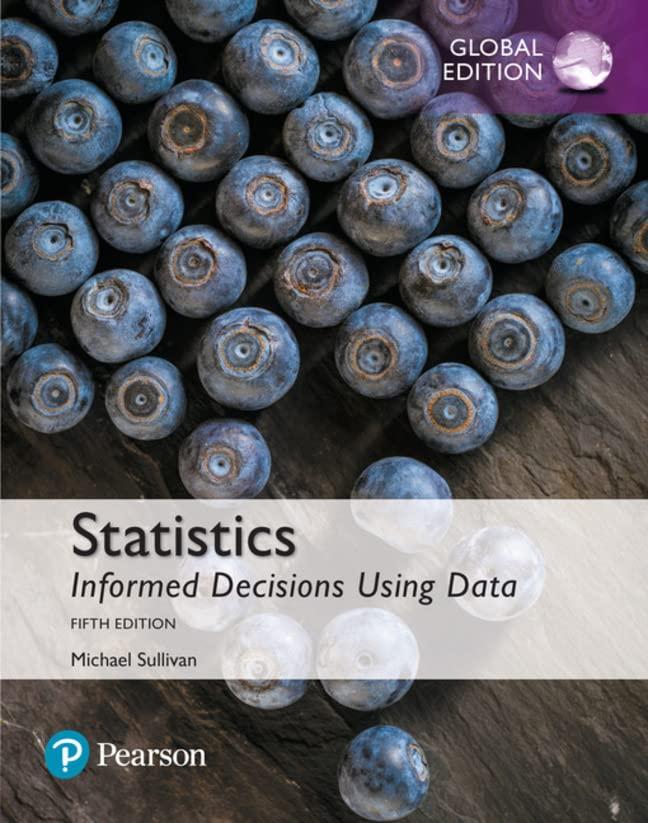Suppose that there are two urns. Urn I contains four black and three white balls. Urn II
Question:
Suppose that there are two urns. Urn I contains four black and three white balls. Urn II contains four black, seven white, and two red balls. Suppose that we roll a fair die. If the die is a one or a two, we randomly select a ball from urn I. However, if the die is a three, four, five, or six, we randomly select a ball from urn II. What is the probability that the ball is black?
Approach We define the events as follows:
U1: Urn I is chosen
U2: Urn II is chosen
B: Black ball is chosen
W: White ball is chosen
R: Red ball is chosen
We answer the question using a tree diagram.
Fantastic news! We've Found the answer you've been seeking!
Step by Step Answer:
Related Book For 

Statistics Informed Decisions Using Data
ISBN: 9781292157115
5th Global Edition
Authors: Michael Sullivan
Question Posted:





